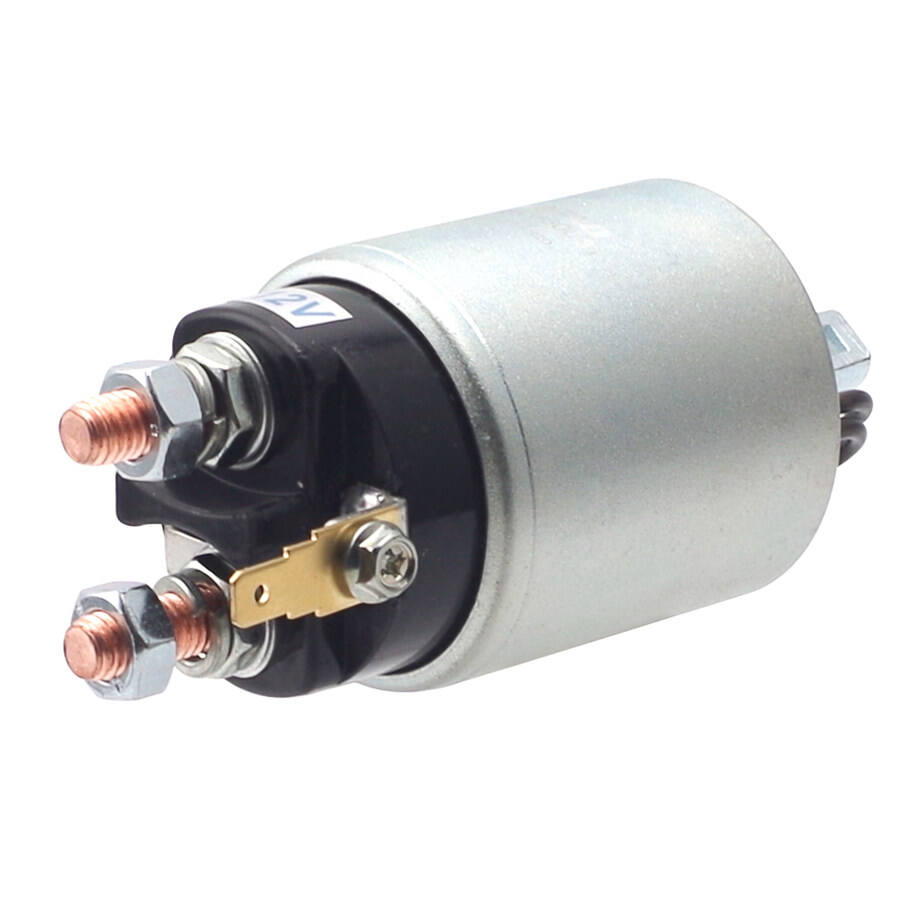Understanding the Critical Role of Solenoid Switches in Modern Systems
In the world of electromechanical devices, the solenoid switch stands as a fundamental component that bridges the gap between electrical signals and mechanical actions. These essential devices operate on electromagnetic principles, converting electrical energy into linear motion to control various mechanical operations. From automotive starters to industrial machinery, solenoid switches play a vital role in countless applications, making their proper maintenance and testing crucial for system reliability.
As we approach 2025, technological advancements have made solenoid switches more sophisticated and integral to modern systems than ever before. Understanding how to properly test and maintain these components can save significant time, money, and prevent potential system failures. This comprehensive guide will walk you through everything you need to know about solenoid switch testing, maintenance, and troubleshooting.
Essential Tools and Equipment for Testing
Basic Testing Equipment Requirements
Before beginning any solenoid switch testing procedure, gathering the right tools is essential. A digital multimeter serves as your primary testing instrument, capable of measuring voltage, resistance, and continuity. You'll also need basic hand tools, including screwdrivers, pliers, and wrenches, to access and handle the solenoid switch. Safety equipment such as insulated gloves and safety glasses should always be part of your testing kit.
Advanced testing might require specialized equipment like a solenoid switch tester or an oscilloscope for more detailed analysis. These tools can provide deeper insights into the switch's performance characteristics and help identify subtle issues that basic testing might miss.
Safety Precautions and Preparation
Working with solenoid switches involves electrical systems, making safety paramount. Always ensure the power source is disconnected before handling any components. Create a clean, well-lit workspace and document the initial position and connections of the solenoid switch before removal. Having a systematic approach to testing not only ensures safety but also leads to more accurate results.
Keep a detailed log of your testing procedures and results, as this documentation can be invaluable for future reference and maintenance planning. Remember to work in a dry environment and avoid any contact with water or conductive materials during testing.
Step-by-Step Testing Procedure
Visual Inspection and Initial Assessment
Begin with a thorough visual inspection of the solenoid switch and its surrounding components. Look for signs of physical damage, corrosion, or loose connections. Check the mounting brackets and ensure all wiring is properly secured. Any visible damage or wear should be noted and addressed before proceeding with electrical testing.
Pay special attention to the switch's terminals and connections, as these are common points of failure. The coil housing should be intact, and the plunger should move freely without binding or excessive resistance.
Resistance and Continuity Testing
Using your digital multimeter, measure the resistance across the solenoid switch coil terminals. A properly functioning solenoid switch will show a specific resistance value within the manufacturer's specifications. Any significant deviation could indicate a failing or damaged coil. Test for continuity between the switch contacts in both engaged and disengaged positions.
Record all measurements and compare them with the manufacturer's specifications. Modern solenoid switches typically have resistance values ranging from a few ohms to several hundred ohms, depending on their design and application.
Advanced Diagnostic Techniques
Load Testing and Performance Analysis
Load testing involves checking the solenoid switch's performance under actual operating conditions. This test verifies that the switch can handle its rated current and voltage without excessive heating or performance degradation. Monitor the switch's operation through multiple cycles to ensure consistent performance.
For automotive applications, this might involve testing the starter solenoid switch under various temperature conditions and load scenarios. Industrial applications may require testing under different voltage levels and switching frequencies.
Voltage Drop and Response Time Testing
Measure the voltage drop across the solenoid switch contacts when engaged. Excessive voltage drop can indicate worn contacts or internal resistance issues. Response time testing helps verify that the switch activates and deactivates within acceptable timeframes. These measurements are particularly critical in applications where precise timing is essential.
Modern diagnostic equipment can capture and analyze these parameters with high precision, providing valuable insights into the switch's operational characteristics.
Maintenance and Preventive Care
Regular Maintenance Schedule
Implement a regular maintenance schedule based on the operating environment and usage frequency. Clean the solenoid switch housing and contacts periodically, checking for signs of wear or degradation. Lubricate moving parts according to manufacturer recommendations, using only approved lubricants.
Keep detailed maintenance records, including dates, observations, and any parts replaced. This documentation helps track the switch's performance over time and predict potential failures before they occur.
Environmental Considerations
Consider the operating environment's impact on solenoid switch performance. High temperatures, humidity, dust, and vibration can all affect reliability. Implement appropriate protection measures such as enclosures, cooling systems, or protective coatings where necessary.
Regular environmental monitoring and adjustment of maintenance intervals based on conditions can significantly extend the life of your solenoid switch.
Frequently Asked Questions
How often should a solenoid switch be tested?
Regular testing intervals depend on the application and operating conditions. Generally, industrial solenoid switches should undergo basic testing every 3-6 months, with comprehensive testing annually. High-use or critical applications may require more frequent testing.
What are common signs of solenoid switch failure?
Common indicators include slow or inconsistent operation, unusual noises during activation, excessive heating, or complete failure to engage. Early warning signs might include increased power consumption or longer activation times.
Can a solenoid switch be repaired or must it be replaced?
While some components like springs or contact points can be replaced, modern solenoid switches are typically designed as sealed units. In most cases, complete replacement is recommended to ensure reliability and proper operation.
What factors affect solenoid switch lifespan?
Operating conditions, switching frequency, environmental factors, and maintenance quality all impact lifespan. Regular maintenance, proper installation, and operating within specified parameters can significantly extend a solenoid switch's service life.




